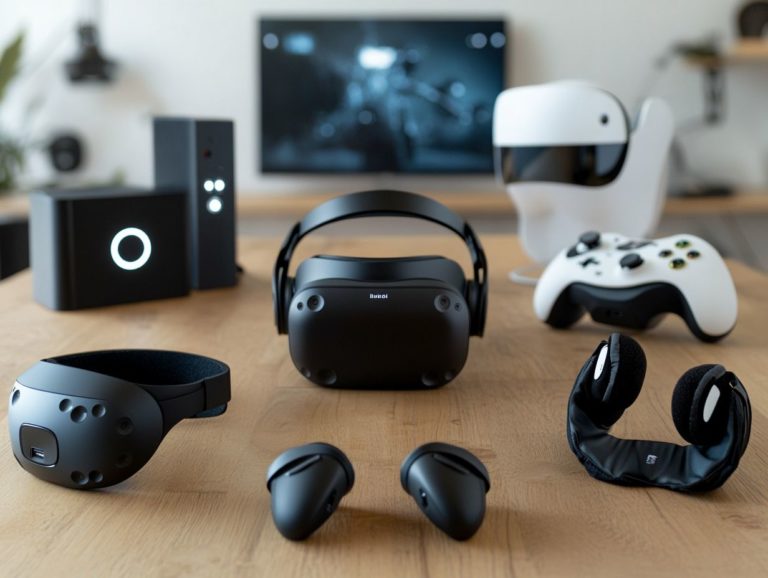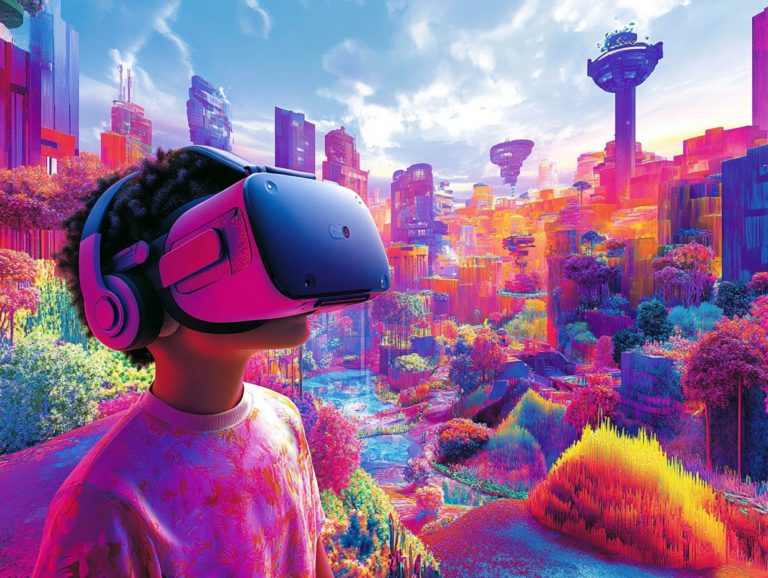the evolution of vr technology in gaming
Virtual Reality (VR) technology has transformed gaming. It creates immersive experiences that transport you to new worlds.
From its humble beginnings to today’s remarkable advancements, VR continually reshapes gaming.
This article explores the history of VR technology in gaming. We ll highlight innovations in graphics and headsets, its impact, challenges, and future possibilities.
Get ready to discover the dynamic relationship between VR and gaming.
Contents
- Key Takeaways:
- Advancements in VR Technology
- Impact of VR Technology on the Gaming Industry
- Overcoming the Hurdles of VR Technology
- The Future of VR Technology in Gaming
- Frequently Asked Questions
- What is VR technology and how has it evolved in gaming?
- When did the use of VR technology in gaming begin?
- 3. How has the graphics quality of VR games improved over time?
- 4. What other advancements have contributed to the evolution of VR technology in gaming?
- 5. How has VR technology impacted the gaming industry?
- 6. What can we expect from the future of VR technology in gaming?
Key Takeaways:
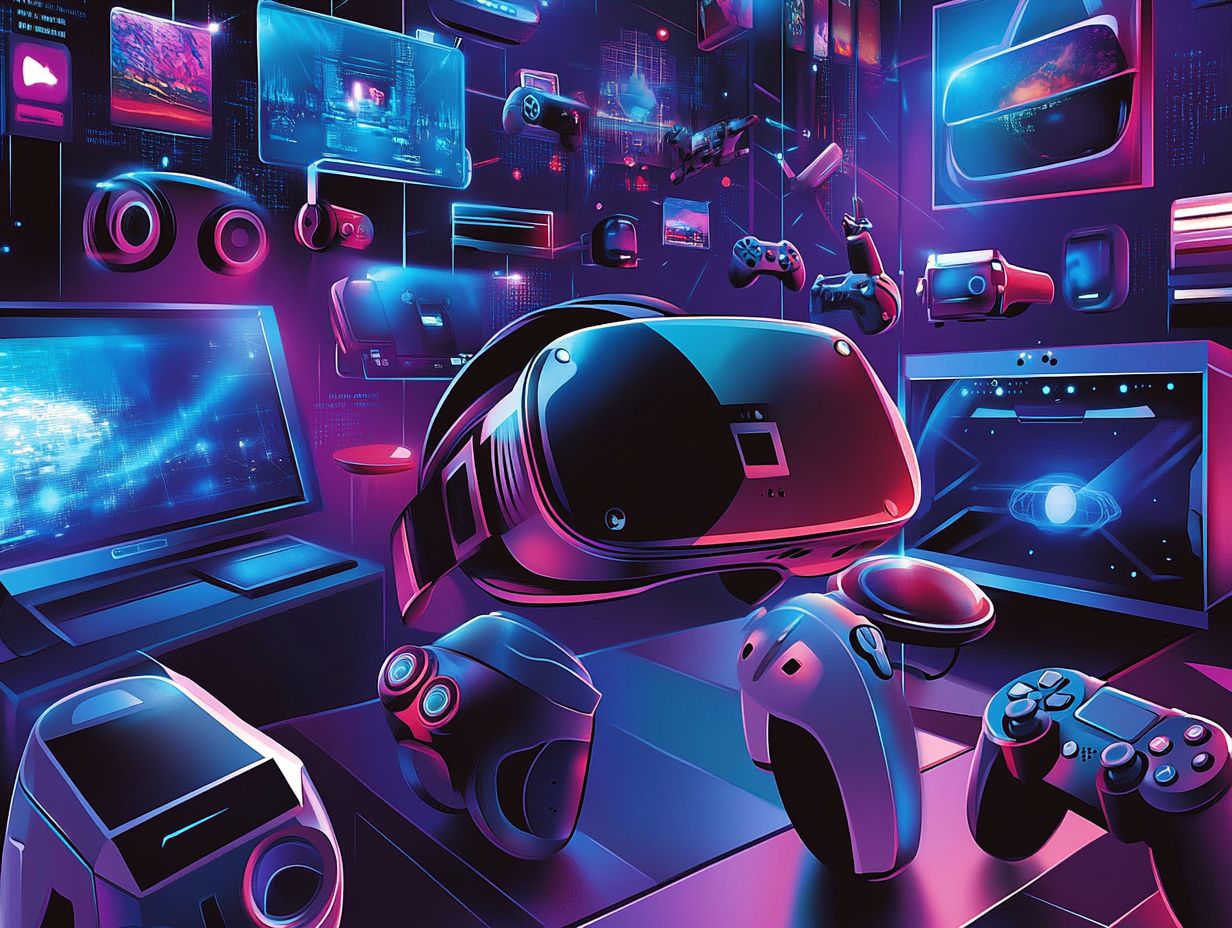
VR technology has significantly enhanced gaming experiences with improved graphics and immersion.
The development of VR headsets has changed the industry and boosted sales. Despite challenges, VR is evolving and has a bright future.
What is VR Technology?
Virtual Reality (VR) creates computer-generated worlds. You can explore these virtual environments using special helmets like the Oculus Rift and HTC Vive.
This technology greatly enhances gaming and education with interactive simulations.
VR uses advanced tools like motion tracking sensors and spatial audio. These elements engage your senses and create a realistic experience.
VR also has important uses beyond entertainment. In healthcare, it trains doctors; in real estate, it offers virtual tours; and in therapy, it helps patients face fears safely.
This technology bridges digital and physical worlds, transforming both entertainment and how we interact with information.
History of VR Technology in Gaming
The history of VR in gaming is a fascinating journey. It starts with ideas like Pygmalion s Spectacles and Sensorama, progressing through Ivan Sutherland’s work in the 1960s.
In the 1980s, VR began to gain momentum, leading to today’s popular games like Half Life: Alyx, inspired by sci-fi classics.
Technological advancements such as motion tracking have significantly shaped the industry. Visionaries like John Carmack have pushed the limits of immersion.
Iconic games like Doom 3: BFG Edition and VRChat showcase VR’s potential and redefine virtual social interactions.
With more accessible hardware and continuous innovation, the evolution of VR gaming is an exciting frontier for everyone.
Advancements in VR Technology
Recent advancements in VR technology have changed your experience. Enhanced graphics and immersive environments make a big difference.
This progress allows you to use motion tracking and gesture recognition, increasing the realism of your interactions, whether gaming or learning.
Improved Graphics and Immersion
The evolution of 3D graphics has dramatically enriched your immersive experience in VR, leveraging advanced graphics and computer-generated imagery to craft realistic virtual environments that captivate gamers and educators alike.
This transformation allows you to feel as if you re stepping into an entirely different world, filled with lifelike details and dynamic interactions.
Take, for instance, games like ‘Half-Life: Alyx’ and ‘Beat Saber.’ They fully capitalize on high-resolution textures and fluid animations, making the virtual landscapes truly engaging.
Educational applications, such as Google Earth VR, empower you to explore distant locations with astonishing detail, effectively bridging the gap between reality and simulation.
These advancements heighten visual appeal and nurture deeper emotional connections, making your overall VR experience all the more compelling.
Development of VR Headsets
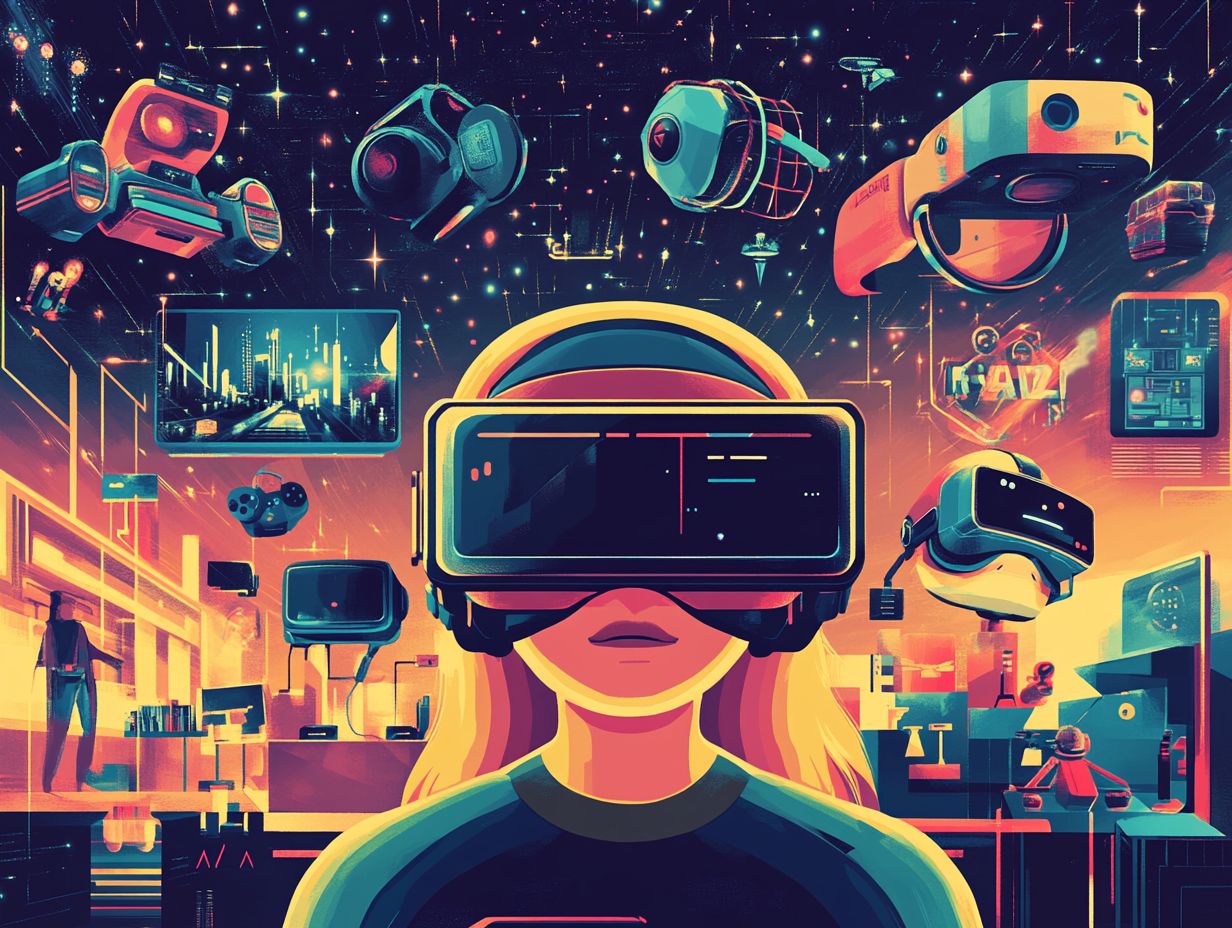
The rise of VR headsets like the Oculus Rift, HTC Vive, and PlayStation VR has transformed how you interact with virtual environments, delivering an immersive experience through advanced VR headsets designed for both gaming enthusiasts and educational users.
These devices have significantly advanced over the years. They incorporate state-of-the-art motion tracking technology, hand tracking capabilities, and social interaction features that elevate your gaming experience.
For example, the Oculus Quest line offers wireless functionality, allowing you to move freely within virtual spaces, enhancing your sense of immersion. Meanwhile, the HTC Vive sets a high standard with its precision and fidelity, making it a top choice for serious gamers and developers.
This evolution broadens the appeal of VR and sparks innovative game design, pushing the limits of storytelling and interactivity within the gaming industry.
Impact of VR Technology on the Gaming Industry
The impact of VR technology has completely transformed the gaming scene. It has reshaped how both AAA studios and indie developers craft and present VR gaming experiences.
As a result, you re now immersed in richly developed game worlds that enhance your engagement and interaction with the game.
Changes in Gaming Experience
VR gaming has revolutionized your gaming experience, offering immersive journeys and interactive game worlds that let you engage with the environment in ways a traditional screen cannot.
This technology transforms how you interact within these virtual realms, enabling you to see, feel, and hear your surroundings, enhancing gameplay in profound ways.
You can physically move, strategize, and collaborate with others in real time, creating deeper connections with both the game and your fellow players. This heightened interactivity fosters emotional engagement, allowing you to experience fear, joy, and triumph more intensely than ever before.
As a result, the seamless blend of sight, sound, and touch leads you to unforgettable adventures, encouraging exploration of complex narratives while cultivating a sense of presence that was once unimaginable.
Effects on Sales and Revenue
The emergence of VR technology has significantly enhanced sales and revenue within the gaming industry, especially during the Covid-19 pandemic. As demand for VR apps and experiences surged, new market opportunities unfolded.
In search of immersive alternatives to traditional entertainment, many players turned to virtual reality, seeking an escape from lockdowns and social distancing. This growing interest drove hardware sales think VR headsets and accessories and sparked innovative game development. Studios swiftly adapted to this evolving landscape, creating captivating VR titles that engaged users and incentivized in-game purchases.
These trends illustrate how the gaming sector has transformed in response to external pressures, fully embracing the potential of VR to attract a broader audience and drive substantial revenue.
Overcoming the Hurdles of VR Technology
Despite its remarkable advancements, VR technology encounters a range of challenges and limitations.
You might notice technical hurdles that can hinder user experience, along with the high costs associated with equipment.
Accessibility issues can pose significant barriers, preventing widespread adoption in the gaming industry.
Technical Limitations
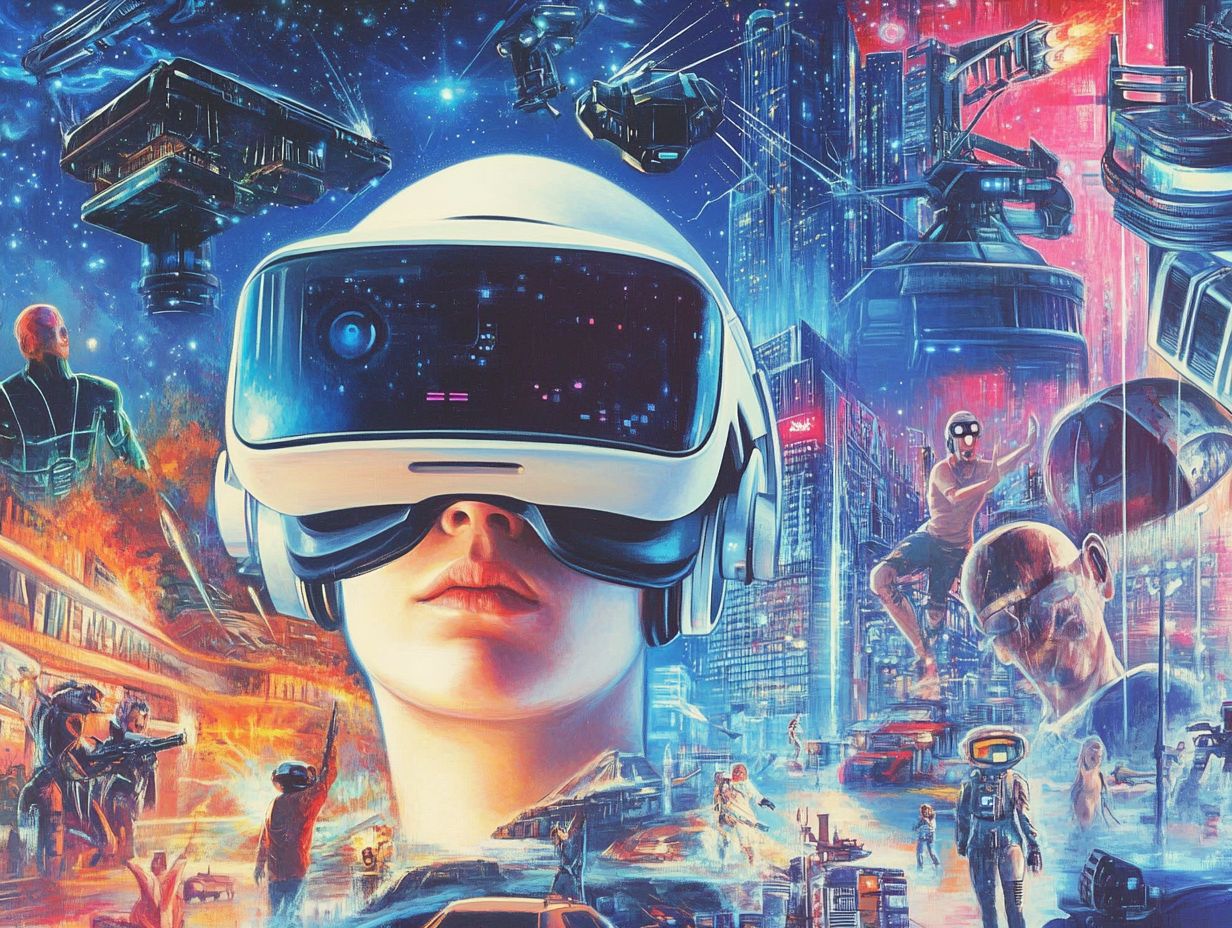
Technical limitations in VR, such as issues with motion tracking and gesture recognition, can significantly hinder your immersive experience. These challenges make it tough for developers to create seamless interactions that are crucial for engaging VR gaming.
Not only do these hurdles disrupt the flow of gameplay, but they can also lead to discomfort, such as motion sickness. This complicates the design process even further. Developers must adeptly navigate the intricacies of the equipment’s capabilities, as insufficient resolution and refresh rates can detract from realism, making virtual environments feel less convincing.
While advancements in technology that simulates the sense of touch hold promise, the current systems often fall short, limiting your tactile interactions within these virtual realms. This gap between vision and execution urges the need for innovations that will bridge this divide and elevate your overall user experience.
Cost and Accessibility
The cost of VR headsets and related equipment serves as a significant barrier to entry, limiting accessibility for many potential users in the gaming industry eager to immerse themselves in virtual worlds.
This high initial investment can deter casual gamers and those on a budget, creating an uneven playing field regarding who can fully appreciate these groundbreaking technologies.
As a result, many gamers still face barriers to adopting VR, preventing innovative gameplay experiences from reaching a broader audience.
VR technology is evolving fast, and now is the time to embrace these exciting advancements! Manufacturers are compelled to continuously introduce upgraded models, further driving up costs.
Consequently, developers face considerable challenges in crafting universally appealing content, acutely aware that a significant segment of gamers may not be able to invest in the necessary hardware to fully experience their creations.
The Future of VR Technology in Gaming
The future of VR technology in gaming presents a landscape filled with exciting predictions and possibilities.
As advancements in immersive realities and user interactivity continue to unfold, expect them to redefine the next generation of gaming experiences, significantly influencing the evolution of the industry.
Predictions and Possibilities
Predictions for the future of VR gaming indicate a remarkable evolution toward increasingly immersive environments, where advancements in technology promise deeper engagement and innovative gameplay experiences.
As hardware becomes more powerful and accessible, you might witness the rise of enhanced haptic feedback systems and artificial intelligence that adapts gameplay in real-time, delivering personalized narratives tailored just for you.
The potential integration of augmented reality features could seamlessly merge virtual and physical worlds, enriching your interactions in ways you ve only imagined.
Developers are likely to creatively explore multiplayer dynamics, cultivating community-driven experiences that keep you and your fellow gamers connected.
These trends may not only redefine your perception of immersion but also reshape the entire landscape of interactive entertainment, paving the way for novel business models and evolving consumer expectations.
Watch this video to learn more about the future of VR in gaming.
Frequently Asked Questions
What is VR technology and how has it evolved in gaming?
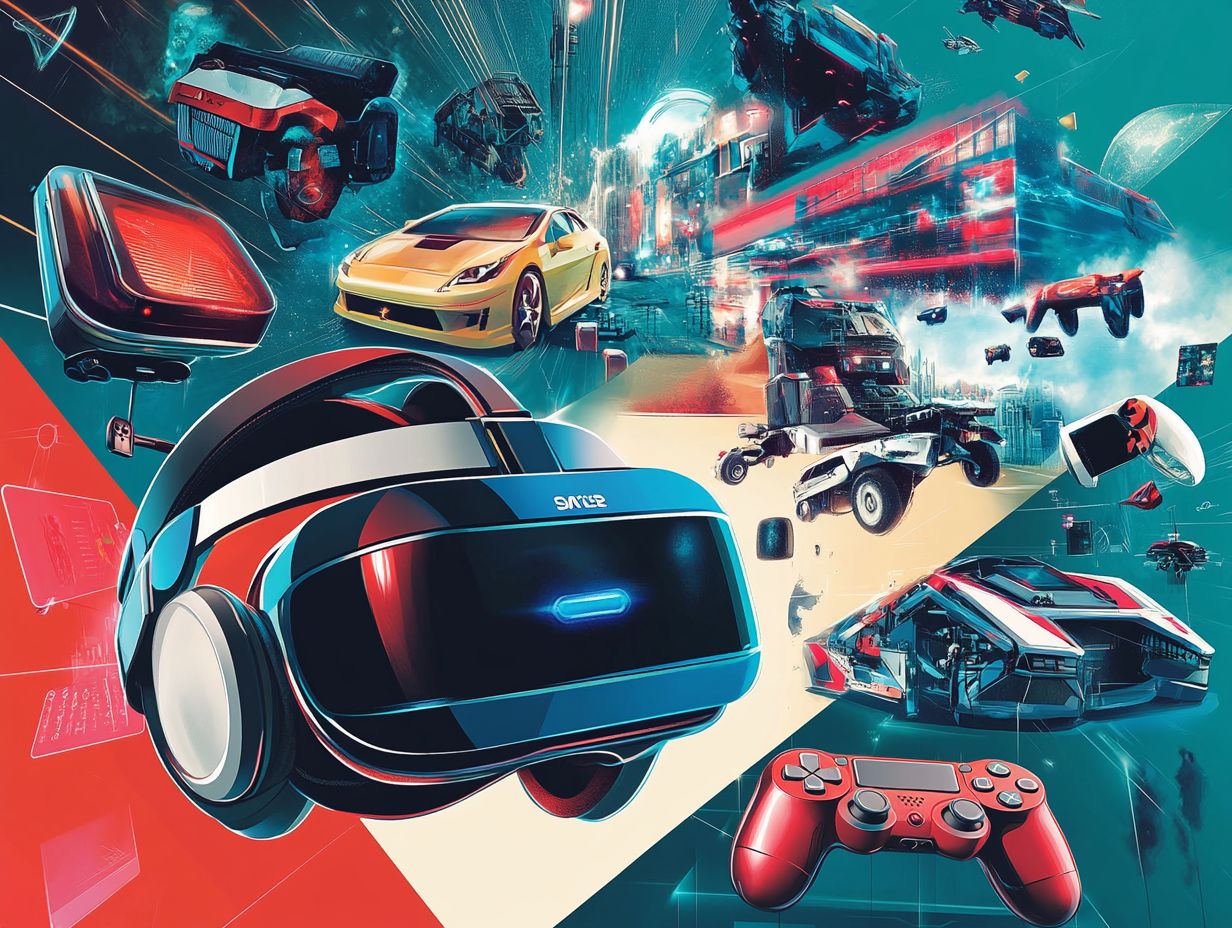
VR technology, or virtual reality technology, is a computer-generated simulation of a three-dimensional environment that can be interacted with in a seemingly real or physical way by a person using special electronic equipment, such as a headset. In gaming, VR technology has evolved from simple headsets and basic 3D graphics to advanced systems that provide immersive and realistic experiences through high-resolution displays, motion tracking, and hand controllers.
When did the use of VR technology in gaming begin?
The use of VR technology in gaming can be traced back to the early 1990s with the release of the Sega VR headset. However, it was not until 2012, with the launch of the Oculus Rift headset and the success of the Kickstarter campaign, that VR technology gained mainstream attention and sparked discussions about the future of VR in gaming.
3. How has the graphics quality of VR games improved over time?
The graphics quality of VR games has come a long way! Early VR games featured simple 3D graphics that were pixelated and lacked realism.
Today, thanks to advancements in display technology and graphics processing, VR games provide high-resolution visuals that can compete with traditional games.
4. What other advancements have contributed to the evolution of VR technology in gaming?
Improvements in motion tracking and hand controllers have significantly enhanced VR gaming. Players can now interact more naturally with the virtual world, making their experience immersive and realistic.
5. How has VR technology impacted the gaming industry?
VR technology has dramatically changed the gaming landscape! It has unlocked new opportunities for developers and introduced gamers to unprecedented levels of immersion.
Moreover, it has birthed new game genres and experiences that were previously unimaginable.
6. What can we expect from the future of VR technology in gaming?
The future of VR technology in gaming is incredibly exciting! With ongoing advancements in hardware and software, we’re on the verge of even more realistic experiences.
VR is also branching out into fields like education and healthcare, hinting at its vast potential for growth.

